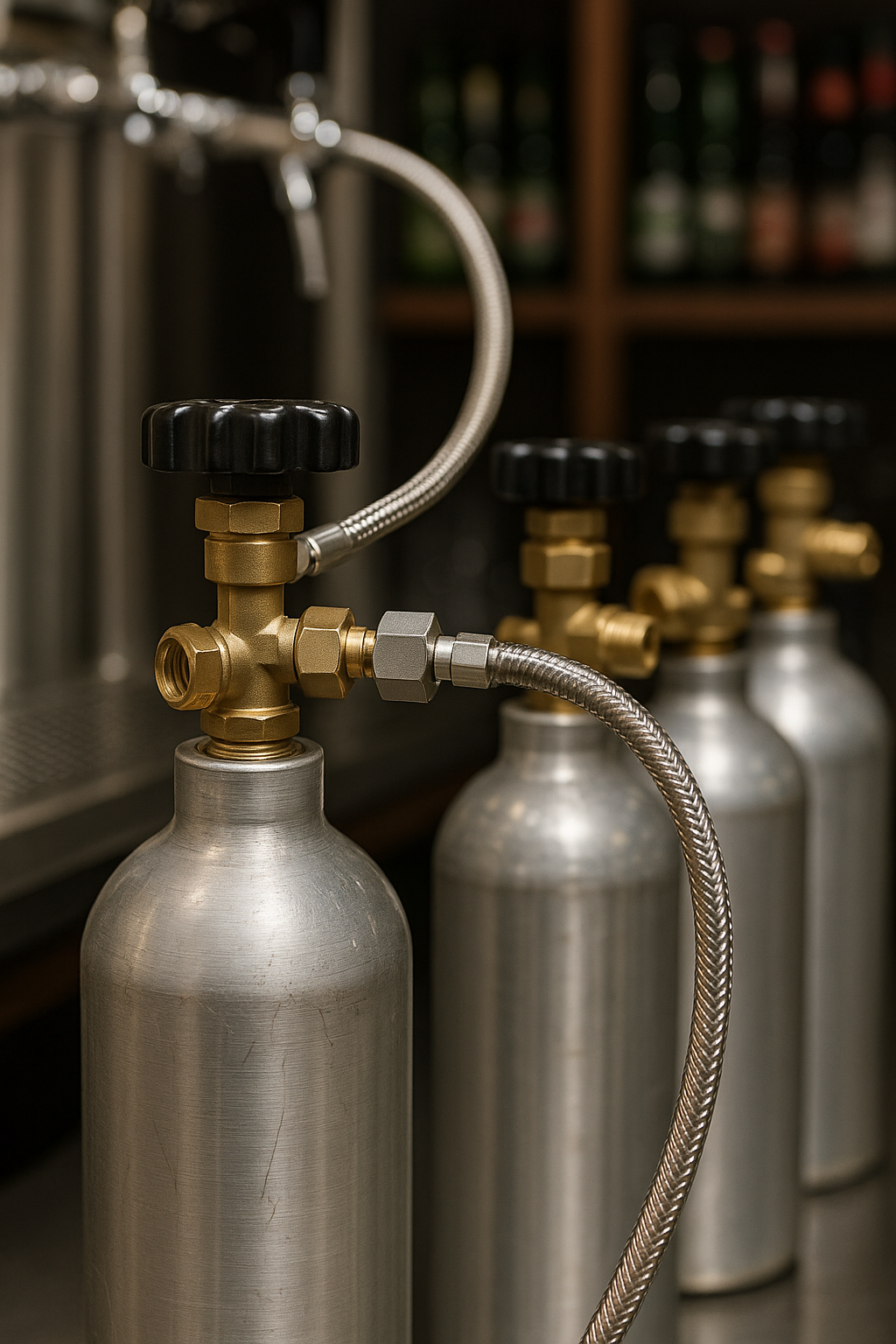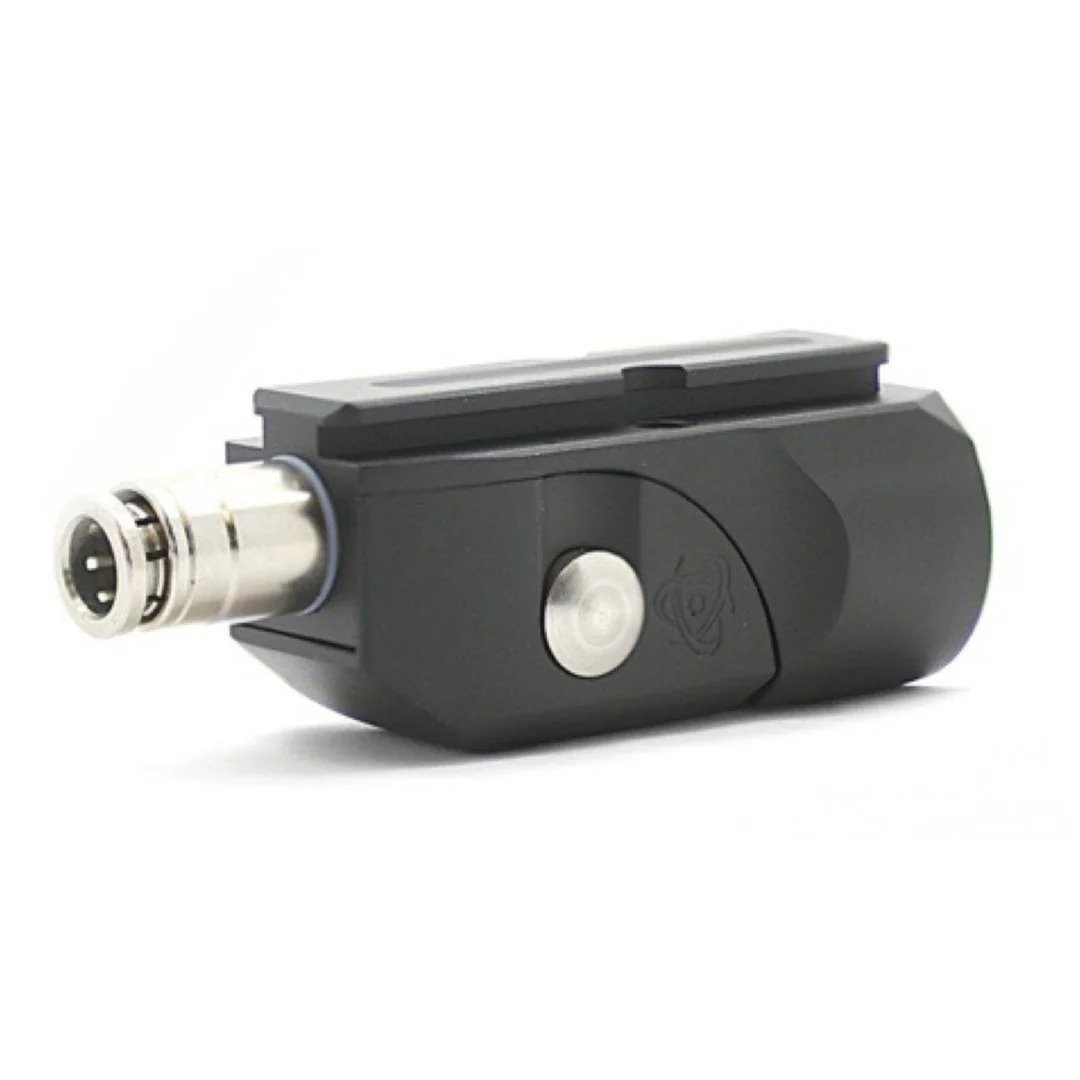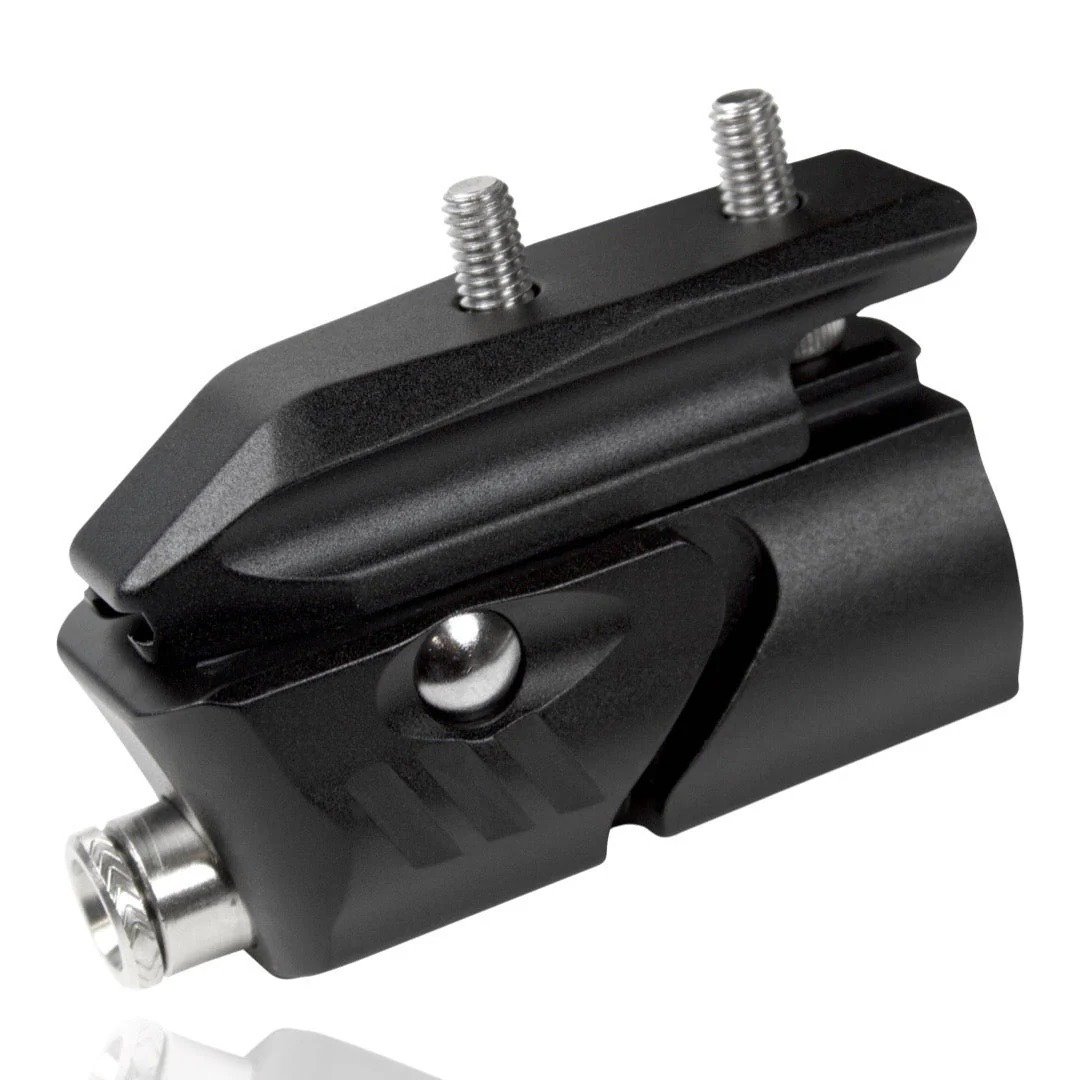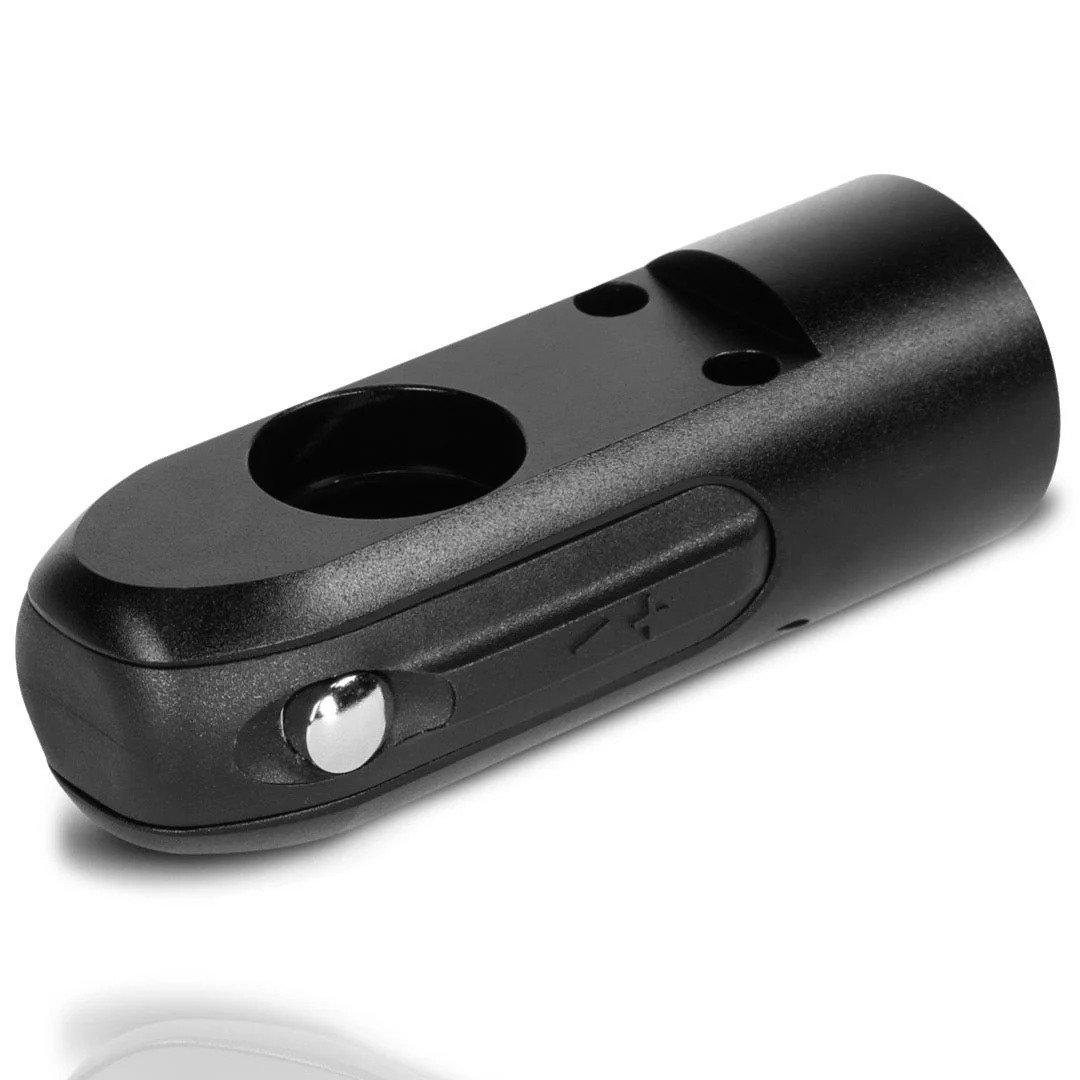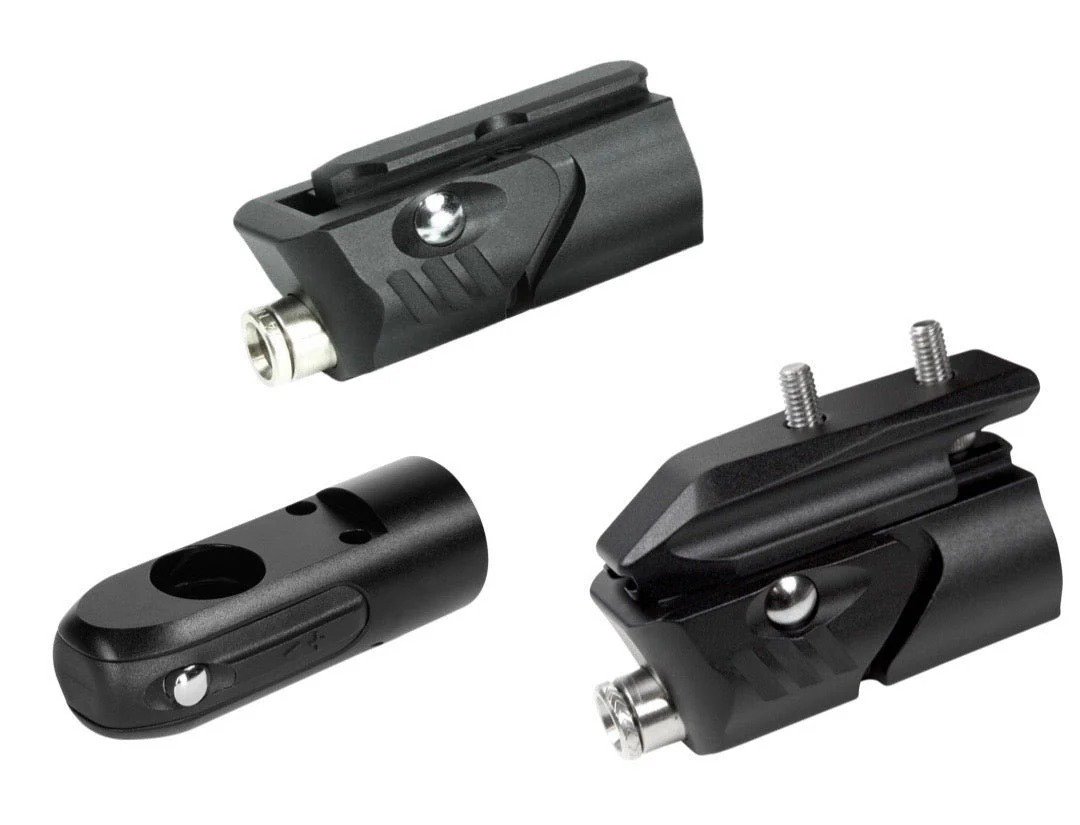Choosing the wrong CO2 tank size can mean frequent refills, higher costs, and interrupted beer service—none of which are good for your business or your enjoyment.
Typically, a 5 lb or 10 lb CO2 tank is ideal for most home or small commercial kegerator setups. The perfect size depends on your consumption frequency and space availability.
CO2 Tank Size Guide for Kegerators
When selecting your CO2 tank, consider these key factors:
- Usage Frequency: How often you serve beer.
- Number of Taps: More taps usually mean more CO2 consumption.
- Refill Convenience: Larger tanks require less frequent refills but more storage space.
Here is a detailed table to help you determine the right CO2 tank size for your needs:
| CO2 Tank Size | Approx. Dimensions (inches) | Weight (full) | Number of ½-barrel Kegs Served | Ideal for |
| 2.5 lb | 14″ × 4″ | ~7 lbs | 2–4 kegs | Small home setups, limited space, occasional use |
| 5 lb | 18″ × 5″ | ~12 lbs | 6–8 kegs | Home setups, small bars, regular moderate usage |
| 10 lb | 21″ × 7″ | ~25 lbs | 10–13 kegs | Small to medium bars, frequent home usage, events |
| 15 lb | 26″ × 7″ | ~35 lbs | 15–20 kegs | Medium commercial bars, catering, busy home setups |
| 20 lb | 28″ × 8″ | ~45 lbs | 20–25 kegs | Large bars, restaurants, event spaces, heavy usage |
Key Considerations for Choosing Tank Size
1. Frequency of Use
- Occasional Use: For serving beer infrequently (a few times per month), a 2.5 lb or 5 lb tank is usually enough.
- Moderate Use: Regular home use or small commercial setups benefit from a 5 lb or 10 lb tank.
- Heavy Use: Bars, restaurants, or venues hosting frequent events will significantly reduce costs by using 10 lb, 15 lb, or 20 lb tanks.
2. Available Space
- Smaller tanks (2.5 lb to 5 lb) fit comfortably within most kegerator cabinets or under-counter setups.
- Larger tanks (10 lb and above) might require external mounting or dedicated storage space outside the kegerator.
3. Cost Efficiency
- Larger tanks offer a lower cost per pound of CO2, ideal for high-volume establishments.
- Smaller tanks have higher per-pound refill costs but require less storage space and lower initial investment.
Quick Example Scenario:
- Home Bar: A 5 lb tank serving approximately 1–2 kegs per month, refilled every 3–4 months.
- Commercial Bar or Restaurant: A 10 lb or 20 lb tank serving multiple kegs weekly, minimizing refill frequency and operational disruption.
Other questions you may be interested in:
Table of Contents
How much does it cost to fill a CO2 tank for a kegerator?
Running a kegerator isn’t free—CO2 refills are part of the cost.
Filling a 5lb CO2 tank typically costs $15–$25, depending on your local gas supplier and whether you swap or refill.
What impacts CO2 fill cost?
| Factor | Impact on Cost |
| Tank size (5lb, 10lb…) | Bigger tanks = higher cost |
| Swap vs. Refill | Swaps can be cheaper/faster |
| Location | Local gas shop or welding supply |
Pro tip: if you run a bar or event space and go through multiple kegs per week, switching to a 20lb tank can cut costs per fill by half.
How long does a CO2 tank last for a kegerator?
Nothing kills a vibe faster than CO2 running out mid-party.
A 5lb CO2 tank lasts through 6–8 full-sized kegs (1/2 barrels). A 10lb tank can serve up to 13 kegs.
Want it to last longer?
- Keep your system cold: CO2 is absorbed better at lower temps.
- Balance your lines: An efficient system reduces waste.
- Avoid leaks: Always check your connections.
| Tank Size | Estimated Full Kegs Served |
| 2.5 lb | 2–4 kegs |
| 5 lb | 6–8 kegs |
| 10 lb | 10–13 kegs |
| 20 lb | 15–22 kegs |
How long does beer stay fresh in a kegerator?
Nobody wants stale beer, especially not your customers.
With consistent refrigeration and CO2 pressure, beer can stay fresh for 6–8 weeks in a kegerator.
Freshness factors
- Pasteurized vs unpasteurized: Pasteurized beer lasts longer.
- CO2 pressure: Keeps oxidation away.
- Clean lines: No bacteria = longer shelf life.
Is it OK to keep CO2 in the kegerator?
You might wonder if it’s safe or smart.
Yes. Keeping the CO2 tank inside the kegerator is safe and can help maintain pressure stability.
Pros and cons
| Pros | Cons |
| Stable pressure with cold gas | Takes up keg space |
| Less heat = less expansion | Might cause regulator freezing issues |
| Better for smaller setups | Harder to access for refills |
How many glasses of beer are in a full keg?
You’re buying CO2 for one reason—serving beer.
A full-size keg (half barrel) serves approximately 165 12-oz glasses of beer.
Keg size quick guide
| Keg Size | Gallons | 12oz Glasses |
| Half Barrel | 15.5 | 165 |
| Quarter Barrel | 7.75 | 82 |
| Sixth Barrel | 5.16 | 55 |
| Corny (homebrew) | 5 | 53 |
Can a CO2 tank be in the fridge?
You’ve got limited space. Is it a problem?
Yes, it can be inside—but keep it upright and secured to avoid pressure issues or tipping.
If your fridge is tight on space, consider a tank mount outside the cabinet with a drilled port for the airline.
Do kegerators use a lot of electricity?
Every appliance adds to the bill. But how much?
A typical kegerator uses about 30–50 watts—similar to a mini fridge. That’s roughly $3–$10/month in electricity.
Keep your unit efficient:
- Place it in a cool space
- Keep vents dust-free
- Don’t overload with warm kegs
Is a keg cheaper than buying beer?
This one matters, especially for events and commercial setups.
Yes, keg beer is cheaper per ounce—up to 40% savings over bottles or cans.
But don’t forget hidden costs:
- CO2 refills
- Kegerator maintenance
- Upfront equipment costs
Still, if you serve often, the math checks out.
What are the disadvantages of a keg?
Not everything is perfect, right?
Kegs need refrigeration, cleaning, and a gas system. They’re bulky, and once tapped, beer has a shelf life.
| Disadvantage | Why It Matters |
| Shorter shelf life | Waste if you don’t finish fast |
| Space-consuming | Needs room in fridge or dedicated cooler |
| Needs gas & maintenance | More work than bottles or cans |
Why does beer taste better from a keg?
It really does hit different, doesn’t it?
Keg beer is fresher, less exposed to light and oxygen, and served cold with ideal carbonation.
Plus, there’s a psychological factor: pouring from a tap just feels premium.
How much beer is wasted in a keg?
You lose more than foam.
A poorly set-up system can waste up to 10% of a keg due to foam, pressure issues, or line contamination.
Tips to reduce waste:
- Clean lines regularly
- Balance your pressure system
- Don’t shake or move your kegs
How long can you keep beer in a kegerator?
Once tapped and properly maintained, beer lasts 6–8 weeks. Beyond that, it may lose carbonation or go stale.
Want it to last longer?
- Use pasteurized kegs
- Keep temps consistent at 36–38°F
- Avoid air exposure
How often do you clean beer lines in a kegerator?
Line gunk is real—and it ruins beer.
Clean your lines every 2–3 weeks, or after every keg for best results.
Use an alkaline cleaner and rinse thoroughly. Dirty lines = off-flavors, bacteria, and customer complaints.
What happens if you don't clean keg lines?
Your beer will taste like vinegar and regret.
Unclean lines lead to bacterial growth, off-flavors, foamy pours, and even system damage.
In a commercial setup, dirty lines can cost you customers and health violations.
How to keep a keg cold?
No fridge? No problem.
Use an ice tub, keg jacket, or dedicated kegerator to keep it cold. Target 36–38°F for ideal carbonation.
For events, invest in a jockey box—a portable system that chills beer as it pours.
How long does a 5 litre beer keg last?
Mini kegs are great—but how long do they hold up?
Once tapped, a 5L keg lasts 24–48 hours if unrefrigerated, or up to 3–5 days if chilled with CO2.
Without CO2, oxygen gets in fast—shortening shelf life.
How long is a keg good for once tapped in a kegerator?
It depends on CO2 and temperature.
With CO2 and proper temps, a keg can stay fresh for 6–8 weeks. Without CO2, only a few days.
Unpasteurized beers (like most craft) spoil faster—within 45 days—even under ideal conditions.


